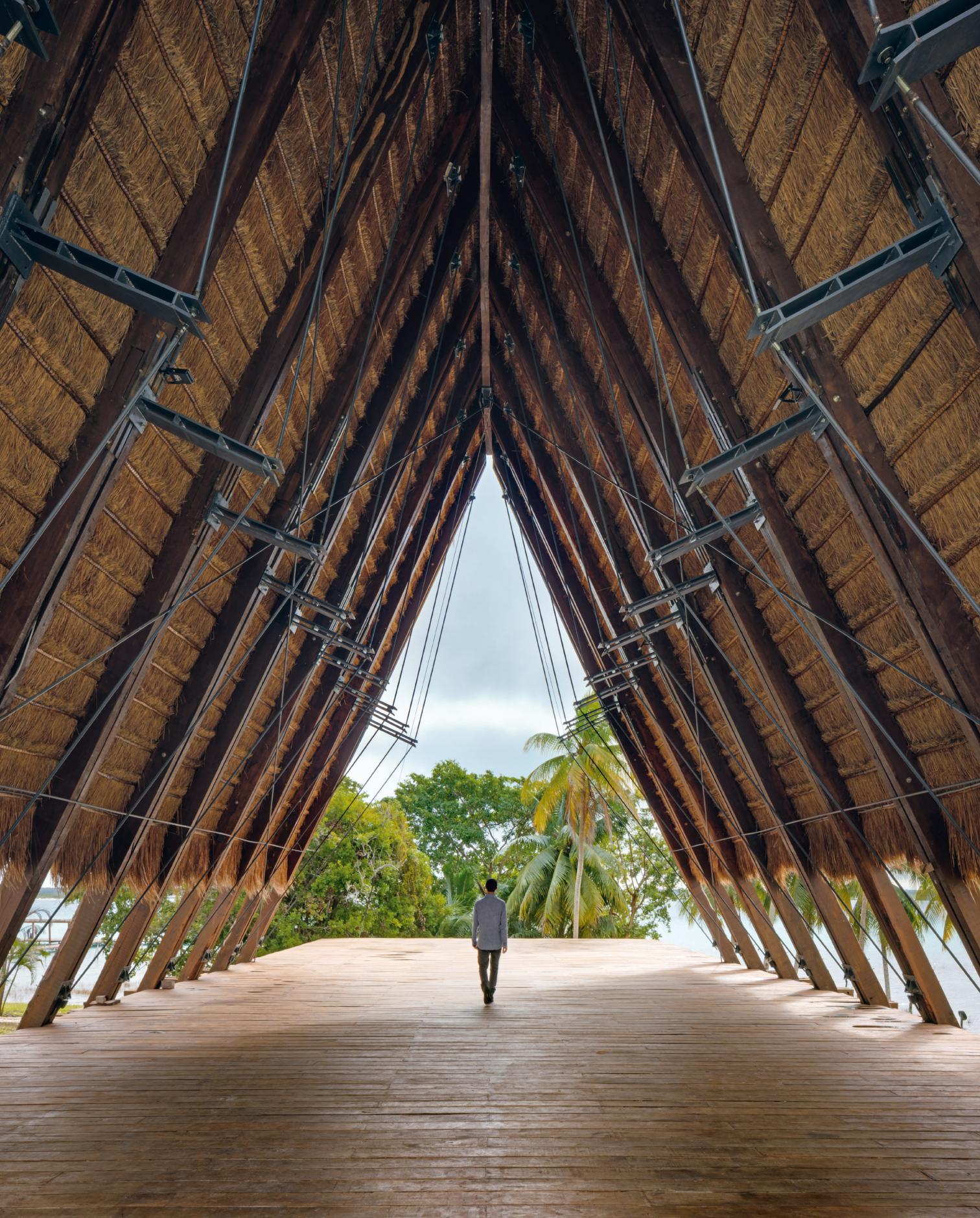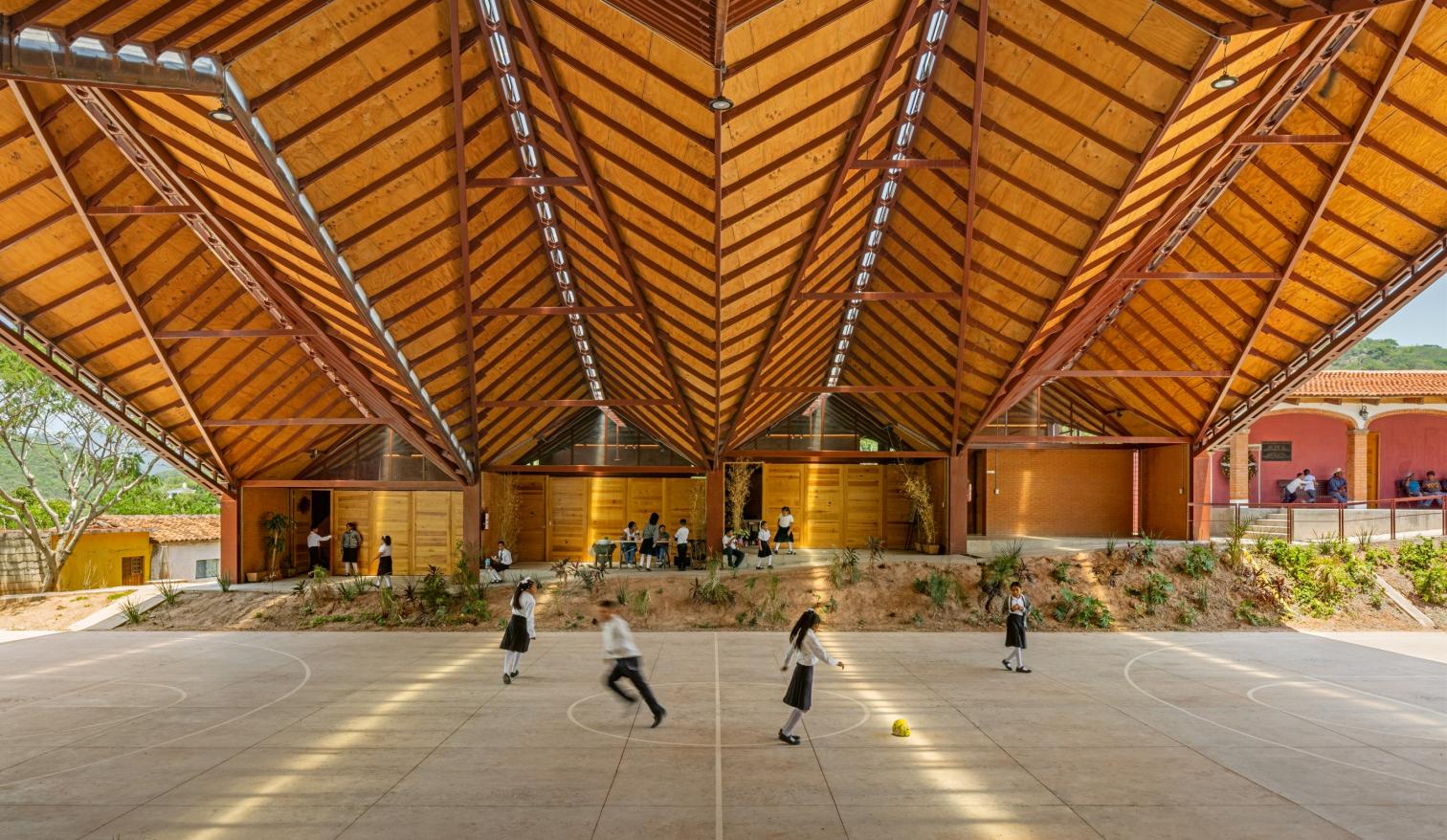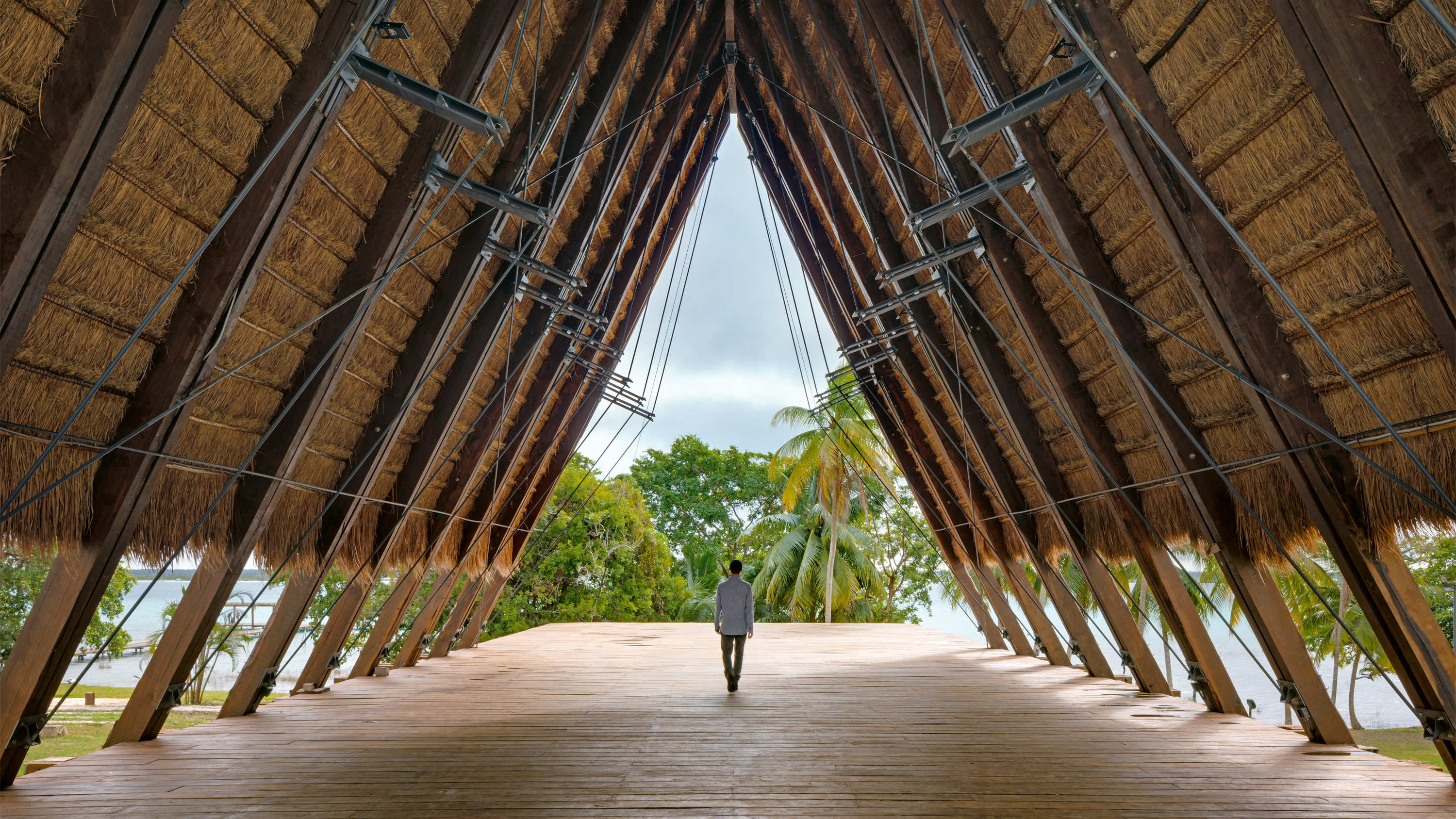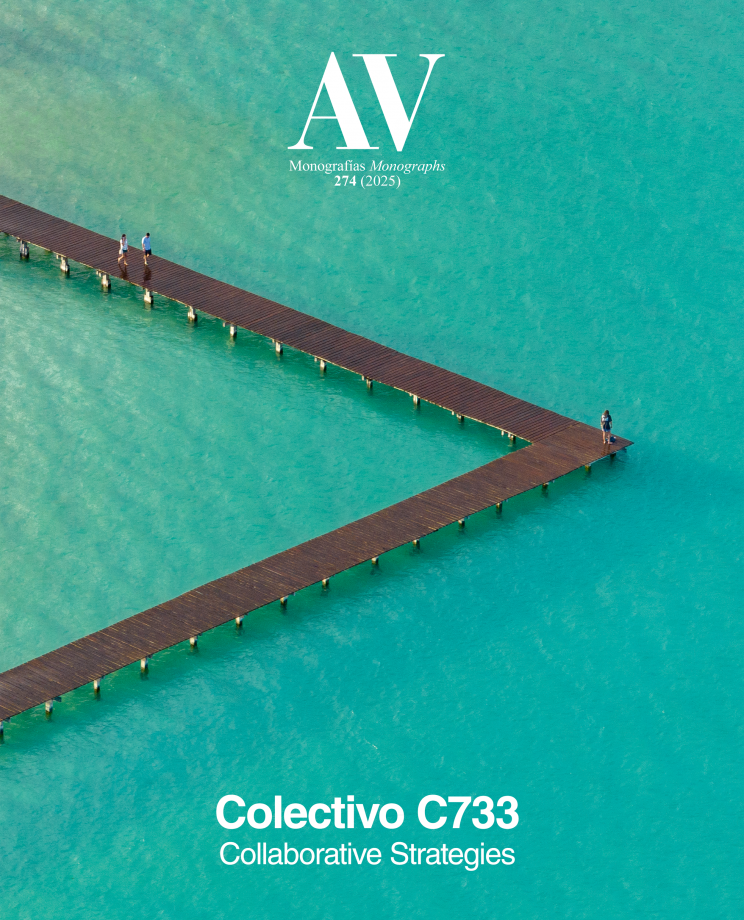Constructive Clarity

The Mexican collective C733 uses constructive clarity to create community. Connecting civic circumstances with their culture of contention, coordinating the changing conditions with costs or climate, and combining their convictions and concepts with the complexity of the context, they convert quantity into quality. This shower of terms starting with the third letter of the alphabet could suggest that one of them refers to the capital letter of their name, but this is not the case. C stands for Cosmic, and the three digits adapt the initials of Logic, Efficient, and Economical, as according to Eladio Dieste any public architecture should be, and that is indeed the goal of the 50 works completed during the six-year term of López Obrador: 36 works carried out in the 36 initial months, and 14 more in the Jaguar Park complex. An admirable accomplishment, inscribed in the determination of the Mexican government to improve life conditions in vulnerable contexts.
In their introductory article, the four members of the Ecuadorian office Al Borde explain this process with such exactitude, elegance, and empathy that this presentation seems unnecessary. Allow me, however, to underline the intelligence with which the slow times of architecture have been adapted to the demanding deadlines of politics, the good sense with which they managed to integrate replicability in projects that are always unique, and the responsibility with which projects have adjusted to site conditions maintaining material precision and spatial quality. Their efficient use of limited resources is expressed in the conception of the body of works as a single project, but also through modular repetition and the hybridization of architecture and structure, a constructive logic that evokes Lina Bo Bardi, but that is also present in the engineer Dieste whom they pay tribute to in their name, and which is expressed well in the ubiquitous triangular section.
This way of working leads to the dissolution of authorship, but the effort in turning architecture into a profession of service, subordinated to the rational use of resources and the well-being of the community, is not incompatible with the literary humor of calling their system ‘La Panadería’ (The Bakery), or their strategies‘topography, insect, skin, and landscape:’ topography is indeed the modeling of the terrain; insect, the light structures that rest on it; skin, the enclosures adapted to each culture; and landscape, the environment understood as an ecosystem. This set of features is grouped under the cosmic dome of their name, which I can only understand through the communion with nature and an organic bond with the community, after all the two pillars that support the ethical and aesthetic dimension of this pragmatic utopia: a collective adventure that fuels our hope with their constructive and communicative clarity.







